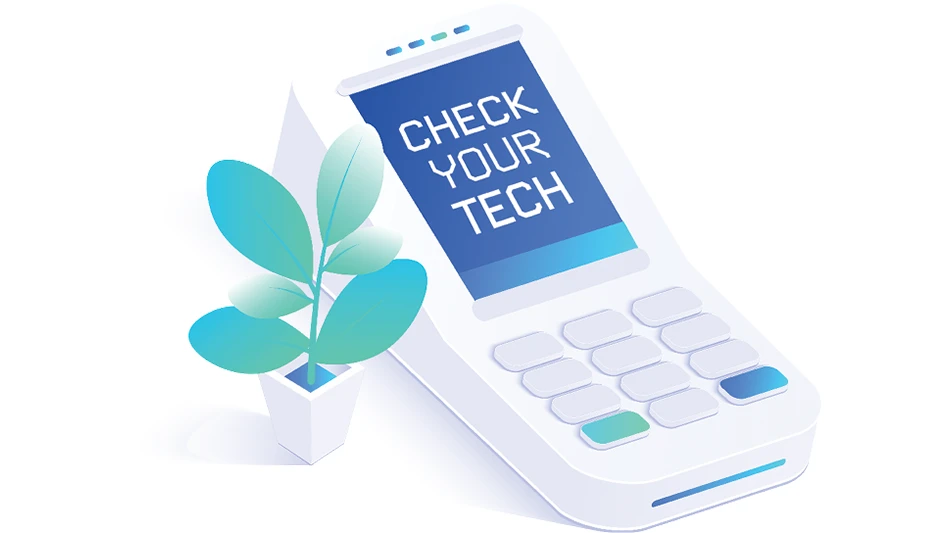

With three springs after the pandemic first hit under its belt, the garden center industry has redefined fast-paced, rapid-change retail. By choice or necessity, IGCs across the country have had to implement e-commerce, navigate plant and product shortages, and stay on top of inventory and sales with less staff and more pressures — all areas where point-of-sale (POS) systems promise help.
The year before COVID hit, a Garden Center survey found that 28% of IGCs weren’t using POS systems, primarily because they were too busy and sales were too high. But IGCs with POS systems noted goals and benefits, including improved inventory control, faster checkout speed and accuracy, better customer tracking and lower labor costs. If the past three springs have you ready to reconsider your first POS or a point-of-sale upgrade, these insights from your peers can help.
Primary considerations for POS systems
When Massachusetts-based Weston Nurseries upgraded to its current POS system a decade ago, Peter Mezitt, president, turned to other IGC owners and operators for advice. While he understood changing to a new system wasn’t simple, it was clear that the company needed more robust tools. “We knew we were going to open more stores in our future,” he recalls.
In upgrading systems, Mezitt was particularly interested in multi-store features and more powerful inventory control features and reporting, which ultimately led him to choose his current provider.
Mezitt explains that Weston’s business model involves a lot of future business — such as pick-ups, deliveries and installations — that gets invoiced through the registers along with typical sales. The company’s business is roughly 50-50 between wholesale and retail. “The wholesale end of it really required a lot of in-depth analyzing of customers and what they bought,” Mezitt says.
As he spoke with his IGC peers who had similar needs for more sophisticated tracking, including customer types, the opinions of others who had experience with Mezitt’s current POS provider made the choice clear.
At Roger’s Gardens, located in Corona Del Mar, California, the POS system the IGC purchased when it upgraded 18 years ago is still in use. General Manager and Vice President Ron Vanderhoff recalls four questions that drove the IGC’s search for a new POS:

Like Mezitt, Vanderhoff recalls the team spent considerable time and effort researching the features of each system they considered to ensure their choice matched the company’s unique existing and future needs. Eighteen years later, Vanderhoff is still happy with the final choice.
“Changing POS or inventory system software is a very expensive and disruptive thing to do in any company and should not be taken lightly,” Vanderhoff says. “... It’s very easy to become drawn to and distracted by the newest, shiniest features to come along, only to see it flame out in a few years, leading to ever-building frustration.” He advises thinking strategically, not emotionally, about the decision, have an open mind and beware of “forcing a decision” on the rest of your organization.
Peg Castorani, owner of Delaware-based Gateway Garden Center, had specific requirements in mind when researching the IGC’s new POS three years ago. She, too, relied on input from other garden center owners and operators in finding a POS provider with a proven track record for IGCs. The final choice was an affordable, cloud-based system that was easy to learn and offered great support. “I can access it anywhere, anytime,” she adds.
Evolution, enhancements and customizations
With any new system, a learning curve is part of the process. But what comes next as your staff’s use of a new POS evolves is where return-on-investment goals speak.
“Like probably everyone, we were basic users of our new system for the first little while, getting comfortable with its capabilities, while continually reinforcing a company culture that would embrace change and this new technology,” Vanderhoff explains. While previous POS experience and the company’s culture helped smooth the transition, he says, “Any change is going to take a little time at all levels of an organization to embrace.”
Roger’s Gardens took an “out-of-the-box” approach for starters, but soon began adding customizations and specific enhancements to tailor the POS to its business needs. Vanderhoff expects the process of continual customizing to go on indefinitely.
“We have now added so many enhancements and customizations that the product that we have today might only vaguely resemble what we started with all those years ago or even what other users of the same software might be using,” he says. “The ability to customize your software to your business is very high on my list of features to shop for in any system.”
At Weston Nurseries, Mezitt and staff are using their POS in ways they never imagined at first. He’s especially impressed by the system’s special data reporting and analysis tools. “If you learn how to build a report — and there are three or four of us who are really good at it now — it’s awesome. It shows you anything you want to get regarding customers, regarding inventory, regarding cash registers, regarding daily average sale or what sells with what.”
As an example, he talks about a report just created (interestingly, by someone who isn’t a heavy user of the system). At this time of year, the IGC typically has many purchase orders or pre-orders involving back orders. And while their previous POS reports helped, there was more they could do.
“When we receive a purchase order, we can assign one item on that purchase order to be pulled — not go into stock, but go into a holding area,” Mezitt explains. Then, when the item comes in, the system allocates it back to the customer’s order as no longer on back order.
The new report feature that won Mezitt’s praise created a back order column, sorted by salesperson and by order. “We can see the salesperson and all their orders lined up nicely in rows,” he says. “Then when we see that all the items are received, meaning there’s a zero in the back order column, we can call the customer and say, ‘Your order’s here.’ So that’s how powerful it can be. That’s just one example that we discovered lately.”
Castorani says the team at Gateway is still finding new ways to use their POS to make reporting more thorough. “Our inventory management reports are deep. We can see what is old inventory and the date received on all materials. We watch our sales all day long,” she says.
One POS feature that Castorani finds especially helpful is the automatic calculation of charges for plant installation. Gateway’s POS also prints directions for delivery, calculates the cost based on mileage and prompts the crew every morning for outgoing deliveries. “We can download any report into Excel in a flash. We can sort data any way we like from there,” she says.
A feature Castorani would like to see? “Maybe an auto prompt that automatically contacts customers about the arrival of plants on their wish list,” she says.
Strong POS support partnerships
When it comes to support, Castorani speaks from experience gained from two POS system changes. “Support is the most critical puzzle piece to your success,” she says. The system the IGC uses now was designed by a company with firsthand garden center experience. “They understood our needs like no other. For example, when plants arrive and we are receiving an order, we are prompted for what plants are on a customer’s wish list so we can email them or call that day,” she says.
Without a tech person on staff, Castorani spent months searching for the right POS provider during both transitions. Support was a guiding consideration throughout. “You don’t know what you don’t know! … I was determined not to buy an expensive system that might not have responsive support teams,” she says, adding that size and support don’t necessarily go hand in hand. Again, input from IGC industry peers on their POS pros and cons helped her settle on the right fit.
Vanderhoff agrees that a POS partner with strong support is critical to the functionality and success of any POS system. “Don’t think that your part-time IT person or that one employee who is really computer savvy is going to handle your system issues,” he says. “You need a strong partner support company, who you sign a contract with. These are the people who are intimately knowledgeable of your system and that can interface between your needs and the software you have chosen.”
Training and follow-through support are also important aspects of quickly getting your staff up and running with the basics so they can dream up new, innovative ways to optimize opportunities your POS system holds. Mezitt says that while most software companies give some training, “It’s never enough. You really have to teach yourself.” While he says Weston’s POS isn’t as intuitive as some, it’s practical enough that they could easily figure it out.

Provider platforms and integration options
Weston Nurseries has been offering e-commerce for hard goods, but they just launched e-commerce with plants this spring. Mezitt says they originally set up their online shopping with a popular e-commerce platform, but it requires manual entry of e-commerce orders to get them into their POS system. The company is now switching to an e-commerce suite offered by its POS provider that fully integrates with their existing POS.
Once the transition is complete, about one month from this writing, online customer orders will come into the system and alert staff to pull the order without any manual order entry required. “Not only does it create the order, it automatically reduces the inventory available. So, we’re on to Space Age stuff here now,” Mezitt says with a laugh.
Vanderhoff advocates a different approach. “I’m not a fan of a great retail POS/inventory platform that attempts to expand their offer and delves into things like e-commerce and email. Almost always, these secondary efforts are not a best of breed outcome,” he says. Instead, he favors the idea of systems built for seamless integrations with the best and most popular e-commerce, email and even customer relationship management (CRM) platforms.
“As a successful business, you should want the best POS, the best e-commerce, the best email and the best CRM platform for your business,” Vanderhoff says. “It’s highly unlikely that each of these will be from one vendor. I don’t want my phone manufacturer to tell me what carrier to use, nor my cable company to select the brand of my television. I want the best solution for my business needs for each function, not one solution for all.”
Vanderhoff believes that thinking of your POS as your CRM tool is a common mistake. He says that while POS systems will maintain and store customer data and connect it to the customer’s transactional information — and even have functionality for email, e-commerce and loyalty programs — analysis of that data is where POS systems fall short.
“Even the best POS system will not be much good at analysis. It won’t be much good at predicting customer behavior, categorizing shopping habits, managing email campaigns, suggesting advertising, promotions, social media, loyalty and so on,” Vanderhoff says. “POS will collect the data, store the data, allow you to report on it, build lists and so on, but it will not leverage that information and tell you what to do with all of it. That is handled through CRM platforms, which connects all that data and makes some sense of it for you.”
Mezitt is happy with the results Weston has seen with its POS-driven Customer Appreciation Program. Customers who sign up at the point of sale immediately get a paper coupon for their next visit. “When they do come back and use that within 60 days, their next receipt starts to have a dollar amount reward on the bottom.” The IGC‘s three locations have about a 70% sign-up rate. Mezitt shares that POS data shows that average visits and average spending under the program “far outweighs” visits and spending by customers not enrolled.

Leaps of faith and company culture
Mezitt is a firm believer in the need for a POS system in garden centers of all sizes. “Whether you’re small, medium or large, you should have one because I think there’s always going to be return on investment if you pick the right one for your size business,” he says. And if you don’t have the skill set to optimize a POS system, Mezitt says, then you need to have people who do.
He acknowledges that many IGC owners simply can’t do any more than they already do: “That’s always the biggest challenge. How does a garden center take that leap of faith to say, ‘Alright, let’s hire these positions, because we believe they’ll pay for themselves.’”?
Without that commitment, Mezitt says you’re better off going simple and inexpensive with POS. “I wouldn’t recommend going with the big, robust systems because you don’t need it. You’re wasting your money,” he says. “If you’re not going to use all these features and really have an interest in expanding your business and growing, I would go with a simple system. … You really have to look at your own business for what it is and what you want it to be.”
Vanderhoff stresses that a POS inventory system is a tool that, like any tool, depends on the hand it’s in for success. “Company culture comes first and will either embrace the technology or resist the technology,” he says. “Perhaps more than any other factor, it is company culture that will dictate the success of any POS inventory system. Great people who embrace change, love to innovate and are supportive and collaborative will ensure success.”
Vanderhoff warns against installing or upgrading a POS inventory system thinking it will solve issues like sloppy data, inefficient operations or inventory inaccuracies. “Those are primarily issues of company culture,” he says. “The best, most expensive and most powerful tool will not fix those issues. Conversely, a great state-of-the-art POS and inventory tool in the hands of a team of skilled, committed and positive staff can take a company from great to exceptional.”

Explore the May 2022 Issue
Check out more from this issue and find your next story to read.
Latest from Garden Center
- Terra Nova Nurseries introduces rust-free and disease-resistant heucherella
- John T. Nickel, founder of Greenleaf Nursery Co., passes away at 89
- Garden Media Group announces sixth annual Women in Horticulture Week
- Star Roses and Plants announces National Knock Out Rose Day
- The Growth Industry Episode 4: How federal budget cuts are affecting horticulture nonprofits
- Pennsylvania Horticultural Society shares top gardening trends from 2025 Philadelphia Flower Show
- California Spring Trials 2026 dates announced
- Les Evans promoted to DRAMMwater segment manager, Al Zylstra to retire





